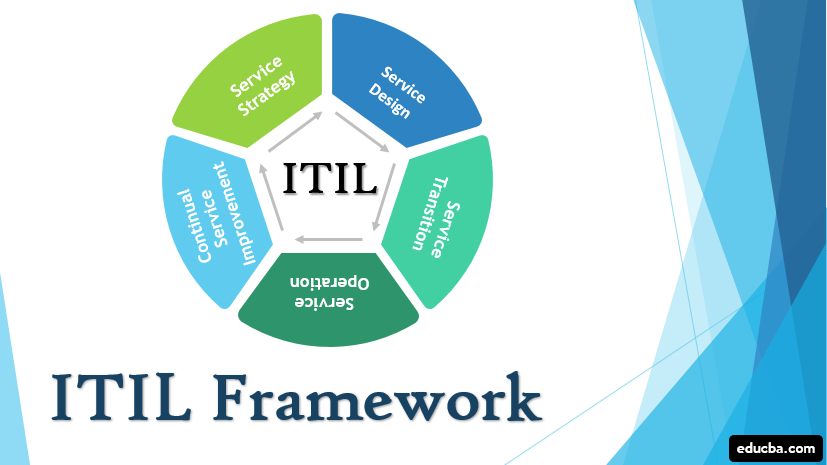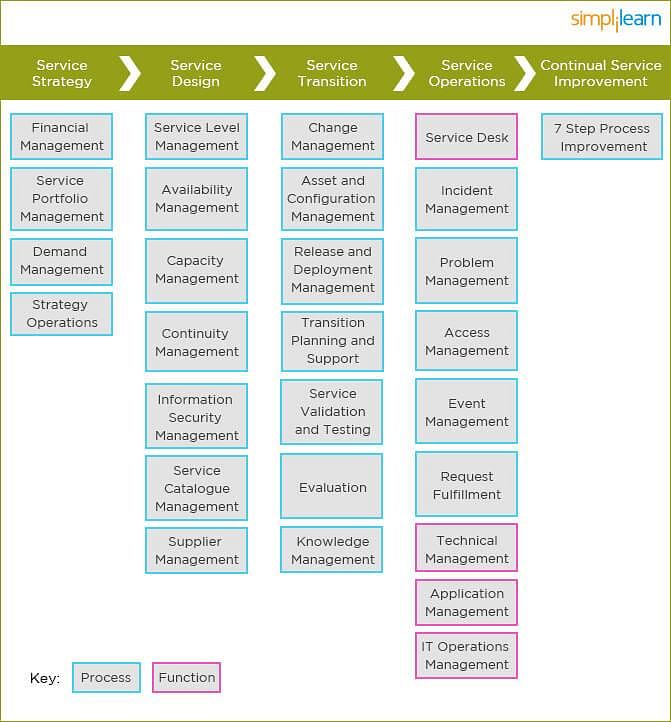
Introduction to ITIL
What is ITIL?
ITIL stands for Information Technology Infrastructure Library and it is a comprehensive set of best practices for IT service management (ITSM). Developed by the UK government in the 1980s, ITIL has become the most widely accepted framework for ITSM globally. It provides guidance on how to align IT services with the needs of the business, improve efficiency and effectiveness, and deliver value to customers.
Why is ITIL important for IT service management?
ITIL is important for IT service management because it offers a standardized approach to managing IT services, helping organizations improve their service delivery and customer satisfaction. Here are some key reasons why ITIL is crucial for IT service management:
1. Best practices: ITIL provides a set of industry best practices for designing, implementing, and managing IT services. These best practices are based on the collective experience and knowledge of IT professionals worldwide, making them highly reliable and effective.
2. Service alignment: ITIL helps organizations align their IT services with the needs of the business. By understanding the business requirements and ensuring that IT services support them, organizations can improve overall efficiency and effectiveness.
3. Process improvement: ITIL offers a structured approach to process improvement, enabling organizations to identify and address areas for improvement in their IT service delivery. This leads to more streamlined and efficient processes, reducing costs and enhancing customer satisfaction.
4. Continuous improvement: ITIL promotes a culture of continuous improvement by emphasizing the importance of monitoring and evaluating IT services on an ongoing basis. This regular assessment allows organizations to identify opportunities for enhancement and make necessary adjustments to deliver better value to customers.
5. IT service lifecycle: ITIL introduces the concept of the IT service lifecycle, which consists of five stages: service strategy, service design, service transition, service operation, and continual service improvement. This lifecycle approach helps organizations manage IT services from inception to retirement, ensuring a structured and systematic approach to ITSM.
In summary, ITIL is essential for IT service management as it provides a standardized framework of best practices, promotes service alignment, process improvement, continuous improvement, and follows the IT service lifecycle. By adopting ITIL, organizations can improve their IT service delivery, enhance customer satisfaction, and achieve overall business success.
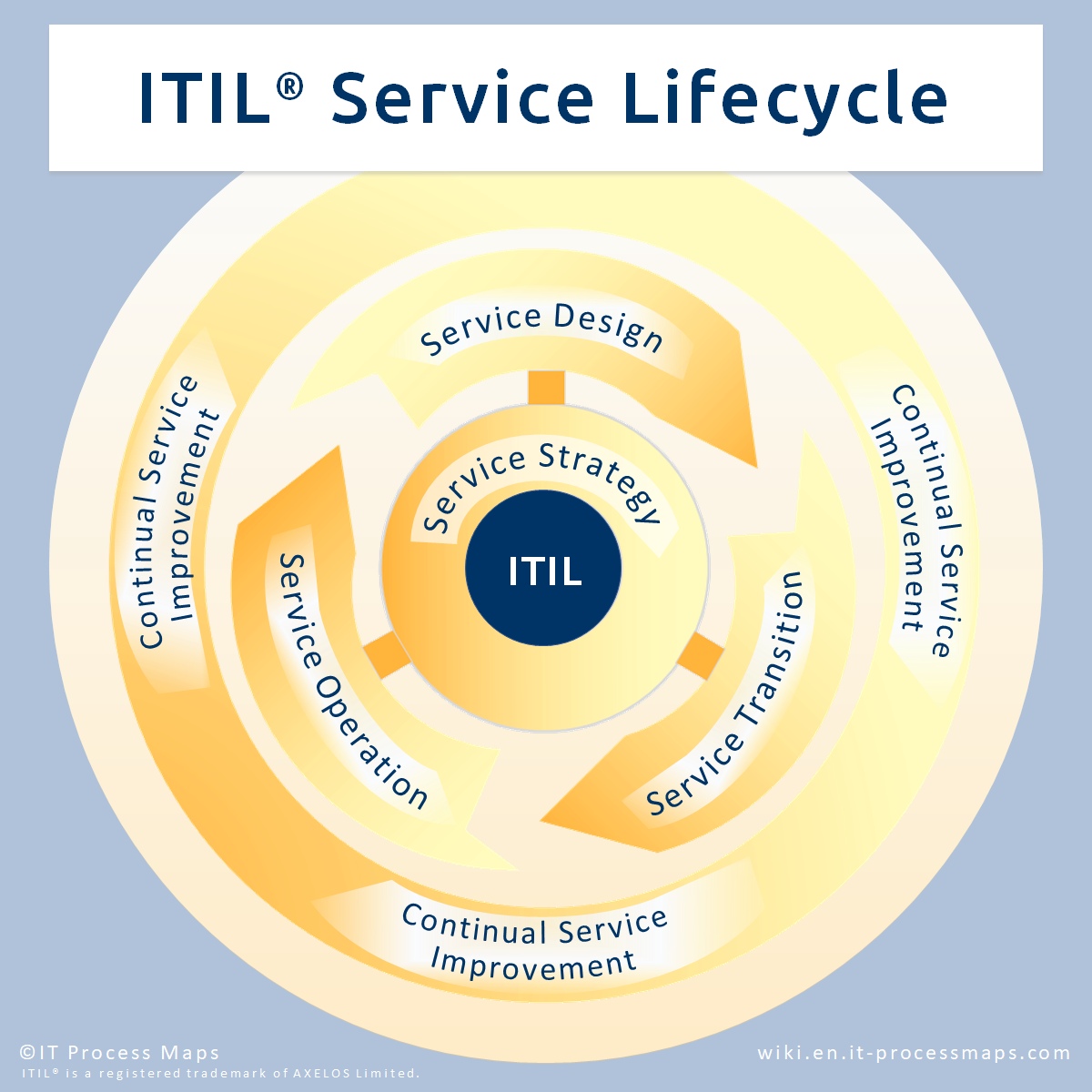
ITIL Framework
Overview of the ITIL Framework
The IT Infrastructure Library (ITIL) is a set of best practices that guides organizations in implementing effective IT service management (ITSM). The framework provides a comprehensive approach to managing IT services, focusing on aligning IT with business objectives and delivering value to customers.
ITIL is globally recognized and widely adopted by organizations of all sizes and industries. It offers a standardized and scalable set of processes and practices that help improve efficiency, reduce costs, and enhance customer satisfaction.
ITIL consists of a series of publications, collectively known as the ITIL Core Guidance. These publications describe the concepts, principles, and practices essential for effective ITSM. They cover a wide range of IT service lifecycle stages, from service strategy and design to transition, operation, and continual improvement.
Key Components of ITIL
The ITIL framework comprises several key components that organizations can use to establish and improve their IT service management capabilities. These components include:
1. Service Strategy: This component focuses on defining an organization’s overall IT service strategy, aligning it with business goals and customer needs. It involves understanding customer requirements, identifying market opportunities, and defining the services to be provided.
2. Service Design: Service design involves designing IT services that are efficient, effective, and aligned with business requirements. It includes creating service portfolios, service level agreements (SLAs), and designing service catalogs to ensure that services are designed to meet customer expectations.
3. Service Transition: Service transition focuses on the effective transition of new or changed services into the live environment. It includes activities such as planning, testing, evaluating, and managing the risks associated with service changes.
4. Service Operation: Service operation involves managing the day-to-day operation of IT services. It includes activities such as incident management, problem management, event management, and access management. The goal is to ensure that IT services are delivered in a reliable and efficient manner.
5. Continual Service Improvement: Continual service improvement (CSI) is an ongoing process of making incremental improvements to IT services and their underlying processes. It involves measuring performance, identifying areas for improvement, and implementing changes to enhance the quality and value of IT services.
These components work together to provide a structured and integrated approach to IT service management. They help organizations deliver services that meet customer expectations, improve operational efficiency, and drive business growth.
To learn more about the ITIL framework and its components, you can refer to the official ITIL Wikipedia page.
ITIL Processes
ITIL (Information Technology Infrastructure Library) is a framework that provides best practices for IT service management. It consists of a set of processes and guidelines that help organizations deliver high-quality IT services to their customers. The ITIL framework is divided into several core processes, each with its own specific objectives and activities. Here are the main ITIL processes:
1. Service Strategy
The service strategy process focuses on understanding the needs and requirements of the business and aligning IT services to support those goals. It involves creating a Service Strategy document that outlines the organization’s overall vision and objectives for IT service management. Key activities in this process include:
- Defining the organization’s Service Portfolio, which includes all the services the organization offers or plans to offer.
- Conducting market research and analysis to identify potential new services or improvements to existing services.
- Developing a financial model to determine the costs and benefits of providing IT services.
2. Service Design
The service design process focuses on designing the IT services required to meet the organization’s business requirements. It involves translating the organization’s service strategy into a set of detailed service requirements and specifications. Key activities in this process include:
- Defining service level agreements (SLAs) that specify the quality and level of service required.
- Designing the technical architecture and infrastructure needed to deliver the services.
- Identifying and managing risks associated with the delivery of the services.
3. Service Transition
The service transition process focuses on transitioning new or changed services into the live environment. It involves planning, testing, and deploying new services or changes to existing services. Key activities in this process include:
- Conducting service testing and validation to ensure that the new or changed services meet the specified requirements.
- Planning and managing the release of new services or changes into the live environment.
- Training and preparing users and support staff for the new or changed services.
4. Service Operation
The service operation process focuses on delivering and supporting the IT services on a day-to-day basis. It involves monitoring service performance, resolving incidents, and fulfilling service requests. Key activities in this process include:
- Incident management, which involves identifying, logging, and resolving incidents that impact service availability.
- Problem management, which involves identifying and addressing the root causes of recurring incidents.
- Change management, which involves managing changes to the IT infrastructure in a controlled and systematic way.
5. Continual Service Improvement
The continual service improvement process focuses on continually improving the quality and efficiency of IT services. It involves monitoring service performance, identifying areas for improvement, and implementing changes. Key activities in this process include:
- Reviewing service level agreement (SLA) targets and performance metrics to identify areas for improvement.
- Conducting regular service reviews to discuss service performance and identify improvement opportunities.
- Implementing service improvement plans to address identified issues and drive the ongoing improvement of IT services.
These ITIL processes work together to provide a structured and systematic approach to IT service management, ensuring that IT services are aligned with the organization’s goals and delivering value to its customers. For more information on ITIL and its processes, you can visit here.
Benefits of ITIL
Adopting ITIL (Information Technology Infrastructure Library) can offer several benefits to organizations seeking to enhance their IT service management practices. Here are some key advantages of implementing ITIL:
Improved customer satisfaction
Implementing ITIL best practices can significantly improve customer satisfaction levels. By aligning IT services with business objectives, organizations can ensure that the services provided meet customer expectations. ITIL emphasizes the importance of understanding customer needs and providing timely and quality services, resulting in enhanced customer satisfaction.
Cost optimization
ITIL helps organizations optimize their IT operations and identify areas where cost savings can be achieved. By implementing effective service management processes, organizations can reduce waste and streamline their IT operations, resulting in cost optimization. This includes optimizing resource utilization, identifying opportunities for automation, and eliminating redundancies.
Increased productivity and efficiency
ITIL provides organizations with a structured framework for managing IT services, which enhances productivity and efficiency. By implementing ITIL processes, organizations can increase the efficiency of service delivery, reduce downtime, and minimize service disruptions. ITIL also promotes the use of standard procedures and best practices, enabling IT teams to work more cohesively and effectively.
Additionally, ITIL helps organizations establish a culture of continuous improvement, encouraging teams to identify and address areas for enhancement. By regularly reviewing processes and implementing improvements, organizations can drive continuous productivity gains and efficiency improvements.
Overall, adopting ITIL can bring several benefits to organizations, including improved customer satisfaction, cost optimization, and increased productivity and efficiency. By implementing ITIL best practices, organizations can enhance their IT service management capabilities and drive better outcomes for their customers and stakeholders.
For more information about ITIL, you can refer to the ITIL Wikipedia page.
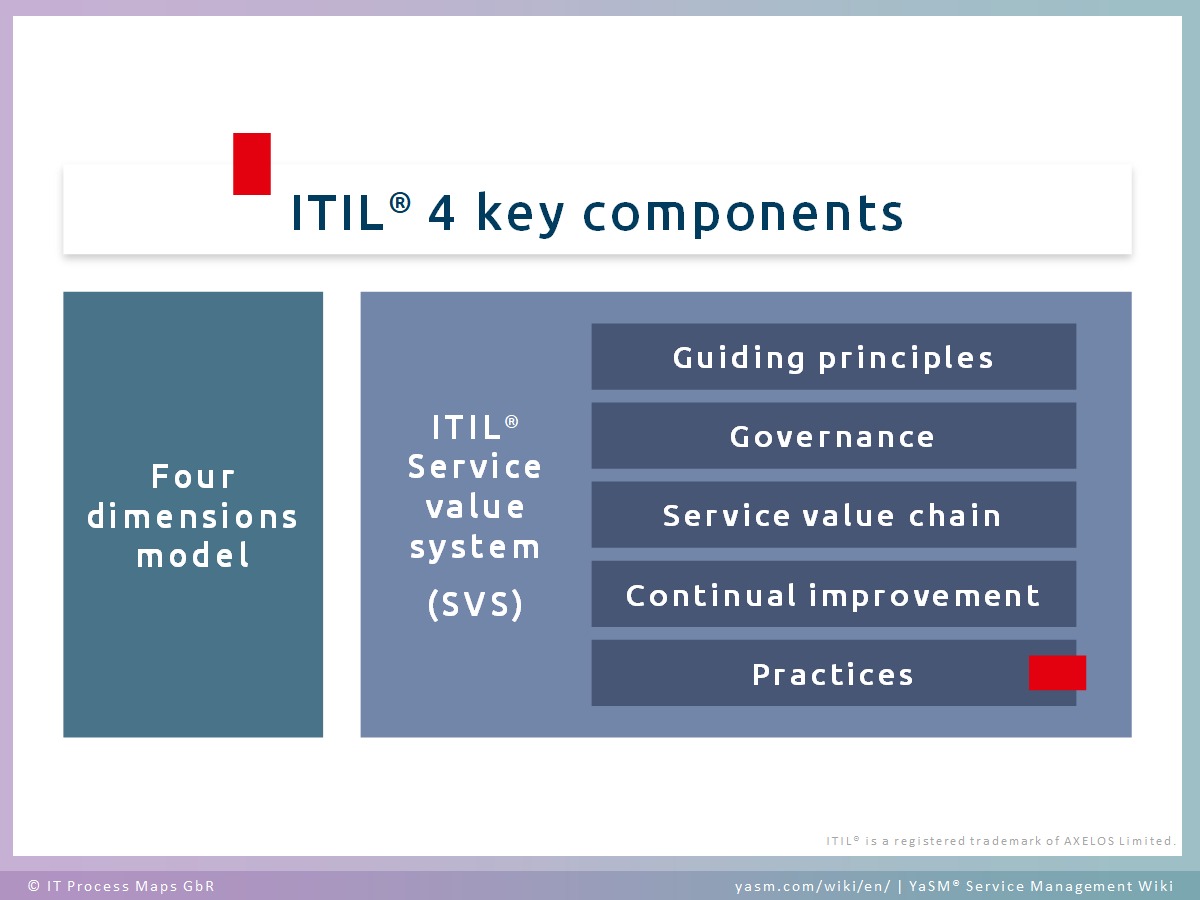
ITIL Tools and Technologies
IT service management software
IT service management (ITSM) software plays a crucial role in implementing and managing ITIL practices within an organization. It helps streamline and automate various IT processes, ensuring efficient service delivery and customer satisfaction. Some popular ITSM software include:
- ServiceNow: A robust and comprehensive ITSM platform that offers a wide range of features, including incident management, change management, asset management, and service catalog.
- BMC Remedy: A powerful ITSM suite that provides end-to-end service management capabilities, including incident management, problem management, change management, and service level management.
- JIRA Service Management: A flexible and scalable ITSM tool that focuses on incident management, problem management, change management, and service request management.
- Freshservice: A user-friendly ITSM software that offers modules for incident management, problem management, change management, and asset management, along with integration options for other IT tools.
Incident management tools
Incident management tools are essential for effectively managing and resolving IT incidents in line with ITIL best practices. These tools help IT teams track, prioritize, and resolve incidents, minimizing disruptions to business operations. Some popular incident management tools include:
- Zendesk: A versatile customer service platform that offers incident management capabilities, enabling IT teams to track and resolve incidents efficiently.
- Atlassian JIRA: A project management tool that also offers incident management features, allowing IT teams to manage incidents, track their resolution progress, and communicate with stakeholders effectively.
- SolarWinds Service Desk: A cloud-based IT service management solution that includes incident management functionality, empowering IT teams to streamline incident resolution processes and track SLAs.
- ManageEngine ServiceDesk Plus: An IT service management tool that offers incident management capabilities, providing a centralized platform for managing and tracking incidents, automating workflows, and generating reports for analysis.
Change management systems
Change management systems are critical for implementing controlled and efficient changes to IT services and minimizing the impact of changes on the business. These tools help ensure that changes are properly planned, assessed, approved, and implemented according to ITIL change management processes. Some popular change management systems include:
- ServiceNow Change Management: A comprehensive change management tool that provides a structured approach to planning, assessing, and implementing changes, while minimizing the risk of disruptions.
- Microsoft Azure DevOps: A collaboration platform that offers change management features, allowing teams to plan and track changes, manage approvals, and automate release pipelines.
- Ivanti Service Manager: An ITSM tool that includes change management capabilities, providing a centralized system for managing and tracking changes, assessing risks, and maintaining an audit trail of change activities.
- ChangeGear: An IT service management solution that offers change management functionality, enabling organizations to streamline change processes, ensure compliance, and track change-related metrics.
These tools and technologies play a crucial role in implementing and managing ITIL practices effectively, helping organizations improve service quality, reduce costs, and align IT services with business objectives.
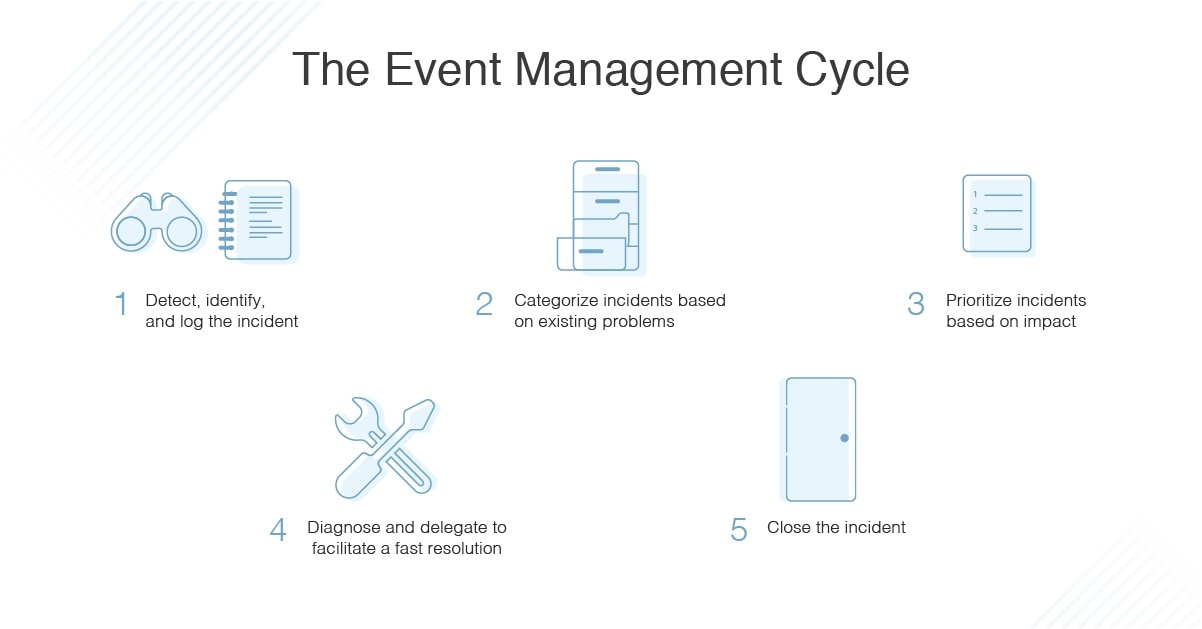
ITIL Best Practices
Implementing ITIL (Information Technology Infrastructure Library) best practices can significantly improve IT service management within an organization. Here are some key areas where best practices can be applied:
Incident management best practices
• Establish a centralized incident management process: By centralizing incident management, organizations can ensure that incidents are properly recorded, tracked, and resolved in a consistent and efficient manner.
• Define and prioritize incident categories: Categorizing incidents based on their impact and urgency can help organizations prioritize their resolution and allocate resources effectively.
• Implement a communication plan: Effective communication is crucial during incidents to keep stakeholders informed about the progress and resolution of the incident. Having a communication plan in place ensures that the right people are notified timely.
• Continuously monitor and review the incident management process: Regularly monitoring and reviewing the incident management process helps identify areas for improvement, streamline workflows, and ensure that incidents are resolved within the defined service level agreements (SLAs).
Problem management best practices
• Establish a proactive problem management process: Proactive problem management aims to identify and address the root causes of recurring incidents. By identifying and resolving underlying problems, organizations can prevent incidents from reoccurring.
• Conduct trend analysis: Analyzing incident data and trends can help identify patterns, recurring issues, and potential problem areas, allowing organizations to take proactive measures to prevent future incidents.
• Implement a known error database: A known error database is a repository of previously identified problems and their workarounds or permanent solutions. This database can help support staff quickly resolve incidents by referring to known solutions.
• Continuously review and improve problem management activities: Regularly reviewing and improving problem management activities ensures that the organization is learning from past incidents and taking steps to prevent them in the future.
Change management best practices
• Establish a structured change management process: A well-defined change management process ensures that changes to IT services are planned, documented, and implemented in a controlled manner to minimize risks and disruptions.
• Conduct impact and risk assessments: Before implementing a change, it is essential to assess its potential impact on the IT environment and identify any associated risks. This allows organizations to plan and mitigate risks effectively.
• Communicate and involve stakeholders: Effective communication with stakeholders is crucial during the change management process. It is essential to involve all relevant parties in decision-making and keep them informed about the upcoming changes.
• Perform post-implementation reviews: After a change is implemented, conducting post-implementation reviews helps evaluate the success of the change and identify any unexpected issues or areas for improvement.
By following ITIL best practices in incident management, problem management, and change management, organizations can enhance the efficiency, effectiveness, and overall quality of their IT service management processes.

Conclusion
Importance of ITIL in modern IT service management
In today’s rapidly evolving technological landscape, IT service management plays a vital role in ensuring the efficient and effective delivery of IT services. ITIL (Information Technology Infrastructure Library) has emerged as a widely adopted framework that provides organizations with a structured approach to IT service management. The importance of ITIL in modern IT service management can be summarized as follows:
- Improved Service Quality: By following ITIL best practices, organizations can align their IT services with business objectives, leading to improved service quality and customer satisfaction.
- Increased Efficiency: ITIL helps organizations streamline their IT processes, resulting in increased operational efficiency and reduced costs.
- Enhanced Communication and Collaboration: ITIL encourages effective communication and collaboration between IT departments and other business units, fostering a culture of teamwork and shared responsibility.
- Standardized Approach: ITIL provides a standardized set of practices and terminology, enabling organizations to achieve consistency and avoid duplication of efforts.
- Continual Service Improvement: One of the core principles of ITIL is continual service improvement, which emphasizes the need for regular assessment and refinement of IT services to meet changing business demands.
- Alignment with Industry Best Practices: ITIL incorporates industry best practices and lessons learned, ensuring that organizations benefit from the collective knowledge and experience of IT professionals worldwide.
Key takeaways from the comprehensive guide to ITIL
After exploring this comprehensive guide to ITIL, here are the key takeaways:
- ITIL is a widely accepted framework for IT service management that provides organizations with guidance on delivering high-quality IT services.
- ITIL is based on a set of best practices and proven methodologies, allowing organizations to improve service delivery, enhance customer satisfaction, and optimize resource utilization.
- The ITIL framework consists of five core publications: Service Strategy, Service Design, Service Transition, Service Operation, and Continual Service Improvement.
- ITIL processes include incident management, problem management, change management, service level management, and many more.
- Implementing ITIL requires commitment and a cultural shift within the organization, as it involves changes to processes, roles, and responsibilities.
- ITIL certification can provide individuals with a solid foundation in IT service management principles and enhance their career prospects in the IT industry.
In conclusion, adopting ITIL can bring significant benefits to organizations by improving service quality, increasing efficiency, and fostering collaboration. By following the best practices outlined in the ITIL framework, organizations can optimize their IT service management processes and deliver value to their customers and stakeholders.

